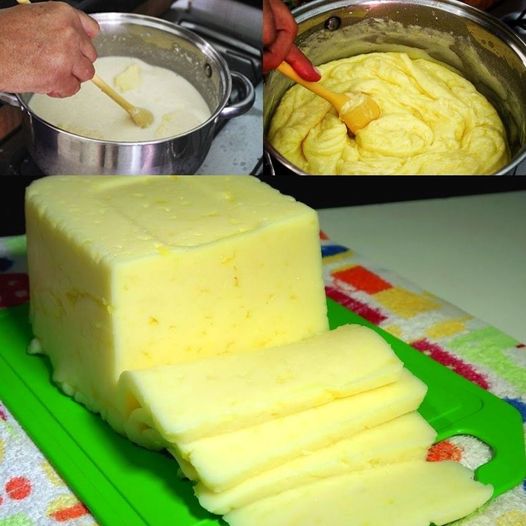ADVERTISEMENT
2. **Adding Cultures and Rennet**: Once the milk reaches the desired temperature, the cultures are added, followed by the rennet. These ingredients begin the process of turning the milk into curds and whey.
3. **Cutting the Curds**: After the milk has coagulated, the curds are cut into small pieces to help release the whey. The size of the curds affects the texture of the final cheese.
4. **Cooking and Stirring**: The curds are gently cooked and stirred to help them release more whey and firm up.
5. **Draining the Whey**: The whey is drained off, leaving behind the curds. Depending on the type of cheese, you may press the curds to remove excess moisture, or you may leave them loose for a softer cheese.
6. **Salting and Aging**: After the cheese has been formed, it’s salted to enhance flavor and preserve the cheese. Some cheeses require aging, which involves storing the cheese in a cool, humid environment for weeks, months, or even years, depending on the type.
### **Types of Cheese You Can Make at Home**
Now that you know the basic process, let’s take a look at some popular types of cheese that you can easily make at home.
### **1. Fresh Cheese (Ricotta, Paneer, Cream Cheese)**
Fresh cheeses are some of the simplest cheeses to make, and they require little or no aging. These cheeses are soft, creamy, and perfect for spreading on bread or using in cooking.
**Ricotta**: Made from whey (the liquid left over from making other cheeses), ricotta is a light, creamy cheese that’s often used in lasagna, ravioli, and desserts. To make ricotta, simply heat the whey, add an acid like lemon juice or vinegar, and strain the curds from the whey.
**Paneer**: A popular cheese in Indian cuisine, paneer is made by curdling milk with lemon juice or vinegar and pressing the curds into a firm block. It doesn’t require aging and is great for curries, grilling, or frying.
**Cream Cheese**: Cream cheese is a soft, spreadable cheese made from a mixture of milk and cream. It’s great for cheesecakes, dips, or simply spreading on a bagel.
### **2. Soft Cheese (Brie, Camembert)**
Soft cheeses have a creamy, smooth texture and often develop a bloomy rind. These cheeses require a little more attention and care than fresh cheeses, but they’re still relatively easy to make at home.
**Brie**: This French cheese has a soft, buttery texture and a white, moldy rind. To make brie, you’ll need a specific type of culture and rennet. The cheese is left to age for a few weeks until the rind forms and the interior becomes creamy.
**Camembert**: Similar to Brie, Camembert is another soft, creamy cheese that’s popular in French cuisine. The process of making Camembert is nearly identical to that of Brie, with a slightly different aging process.
### **3. Semi-Hard Cheese (Cheddar, Gouda)**
Semi-hard cheeses like cheddar and Gouda are more complex to make than soft cheeses, but they’re still within reach for the home cheesemaker. These cheeses require pressing the curds and aging for several weeks or months.
**Cheddar**: To make cheddar, the curds are cut, cooked, and pressed into molds. The cheese is then aged for several months to develop its sharp flavor. The longer the cheese ages, the sharper it becomes.
**Gouda**: Gouda is a mild, sweet cheese with a smooth texture. The curds are pressed and the cheese is aged for a few weeks to several months. Aged Gouda has a deeper flavor and a firmer texture.
### **4. Hard Cheese (Parmesan, Pecorino Romano)**
Hard cheeses are the most time-consuming to make, as they require pressing, aging, and sometimes even waxing the cheese to preserve it. These cheeses are best suited for experienced cheesemakers who want to experiment with aging.
**Parmesan**: Parmesan is a hard, granular cheese that requires a long aging process (usually 12 months or longer). It’s made by heating the curds and pressing them into large wheels before aging them.
**Pecorino Romano**: Similar to Parmesan, Pecorino Romano is a hard cheese made from sheep’s milk. It’s used in a variety of Italian dishes and is typically aged for several months.
## **Conclusion**
Making your own cheese at home is not only a cost-effective way to enjoy high-quality cheese, but it’s also a rewarding and fun hobby. By making cheese from scratch, you can save up to **10 times the cost** of buying store-bought cheese while gaining full control over the ingredients, flavor, and texture of your cheese. Whether you’re making simple fresh cheese, creamy soft cheese, or complex aged varieties, the process of homemade cheese making is both accessible and enjoyable.
So, why not give it a try? Gather your ingredients, pick a recipe, and start making your own cheese today. You’ll be amazed at the flavor, texture, and savings that come with this delightful culinary adventure. Happy cheesemaking!
